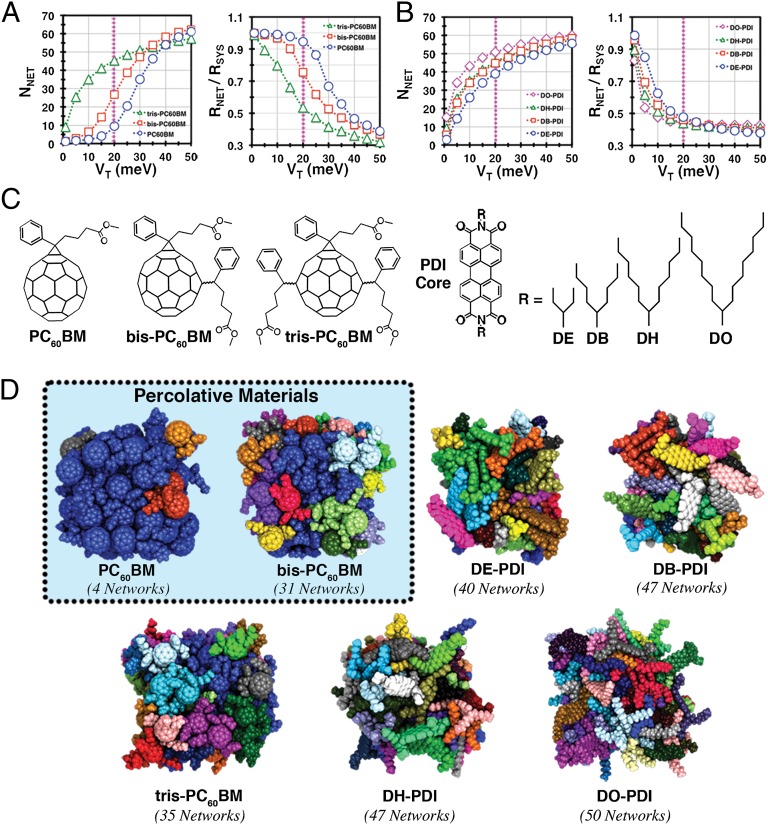Fig. 3.
(A, Left) Number of networks, NNET in PC60BM-based systems as a function of electronic coupling threshold. (A, Right) Ratio of the radius of gyration of the largest network to the total system radius of gyration, as a function of the electronic coupling threshold. (B, Left) Number of networks, NNET, in PDI derivatives as a function of electronic coupling threshold VT. (B, Right) Ratio of the radius of gyration of the largest network to the total system radius of gyration, as a function of VT. (C) Molecular structures of the substituted fullerenes and PDIs. Many regioisomers are possible for bis and tris-PCBM; see SI Appendix for a full discussion. (D) Subnetworks for a sample snapshot of each system, with a coupling threshold, VT, of 20 meV. In each case, distinct electrical networks are given a unique color, and the total number of networks is specified beneath each cluster. The pink lines in A and B denote the threshold value visualized in D. PC60BM and bis-PC60BM materials are highlighted as the only materials whose largest electronic network percolates the cluster volume at the 20-meV threshold.

